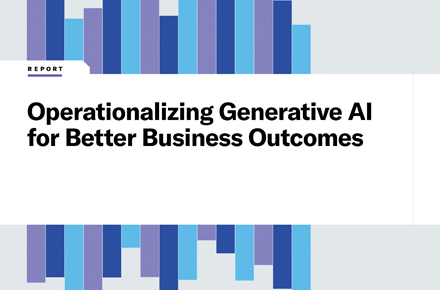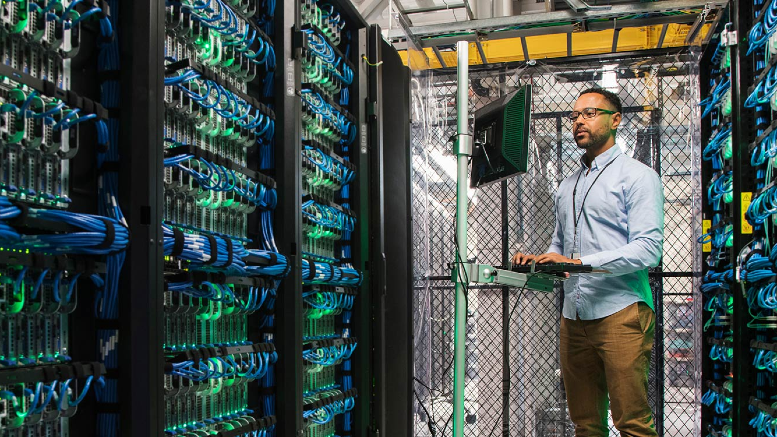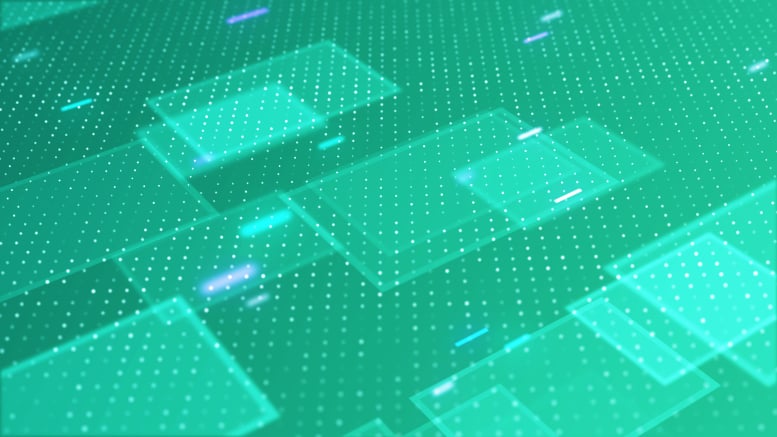Die dreifache Bedrohung der Quantensicherheit: Sind Sie bereit für den Q-Day?
August 12, 2025 / Syed Gilani
Kurzfristig? Die wichtigsten Erkenntnisse lesen:
- Q-Day-Prognosen zeigen, dass die Mehrheit der Quantenbedrohungen bis 2030 prognostiziert, wobei die Dringlichkeit des PQC-Übergangs hervorgehoben wird
- Quanten-Angreifer könnten KI bewaffnen, um unstoppbare Cyberangriffe auf kritische Infrastrukturen zu erzeugen
- Unternehmen benötigen 16–18 Wochen, um mit der PQC-Modernisierung zu beginnen, wobei der vollständige Übergang Monate dauert
- Proaktive Quantum-Readiness-Strategien heute bestimmen die Cybersecurity-Resilienz von morgen
Erinnerst du dich an Y2K? Verbreitete Bedenken über Computersysteme, die bereits in den 90er-Jahren Industries weltweit ergriffen haben. Im Gegensatz zu diesen weitgehend unbegründeten Ängsten stellt Q-Day eine echte Bedrohung dar, bei der Quantencomputer die aktuelle Verschlüsselung brechen können.
Heutzutage kann es zu ernsthaften Cybersecurity-Herausforderungen kommen, die aktuelle Verschlüsselungsmethoden unwirksam machen und sensible Daten gefährden. Untersuchungen, die auf der Australian Cyber Conference 2025 von Unisys vorgestellt werden, identifizieren drei konvergierende Bedrohungen, die sofortige Aufmerksamkeit erfordern: Quanten-Angreifer, bewaffnete KI und unzureichende Bereitschaft für die Post-Quanten-Kryptographie (PQC). Das Verständnis dieser Herausforderungen hilft Unternehmen, sich auf die Auswirkungen von Quantenrechnern auf die Sicherheit vorzubereiten.
Was ist Q-Day?
Q-Day steht für den Moment, in dem Quantencomputer leistungsfähig genug werden, um bestehende Verschlüsselungssysteme zu unterbrechen. Die aktuelle Verschlüsselung basiert auf mathematischen Problemen, die klassische Computer nicht lösen können. Algorithmen wie RSA und ECC gehen davon aus, dass Probleme wie die Faktorierung großer Prime-Zahlen nicht schnell gelöst werden können. Quantencomputer bedrohen diese Annahme. Mit Algorithmen wie Shor’s konnten Quantensysteme diese Verschlüsselungsprobleme in Sekundenschnelle lösen, wodurch herkömmliche Verschlüsselung nutzlos wurde.
Industries Prognosen zeigen, dass die meisten Experten den Q-Day bis 2030 erwarten. Organisationen wie das Global Risk Institute, Google, RAND Corporation und NIST haben alle Zeitpläne veröffentlicht, die auf dieses kritische Zeitfenster hinweisen. Dieser Konsens sorgt für Dringlichkeit bei der Vorbereitung der Quantenbereitschaft.
Die erste Bedrohung: Quanten-Angreifer
Quanten-Angreifer können Quanten-Computing ausnutzen, um Sicherheitssysteme zu untergraben, insbesondere die Verschlüsselung, die moderne Cybersecurity schützt. Zu diesen Angreifern gehören kriminelle Gruppen, die durch illegale Aktivitäten finanziert werden, und staatlich geförderte Akteure mit Zugang zu Quantenforschung und -ressourcen.
Reiche kriminelle Organisationen haben das Geld, um in Quantentechnologien zu investieren, Spitzentalente einzustellen und geheime Forschung zu finanzieren. Sie können Quantenhardware, -software und -algorithmen kaufen oder stehlen oder in Forschungseinrichtungen einbrechen, um Technologie zu stehlen.
Kriminelle Konsortien könnten Quantenverschlüsselung einsetzen, um Operationen zu verbergen, während staatlich gesponserte Gruppen wie die nordkoreanische Lazarus Group ihre Cyber-Kapazitäten in das Quantenreich ausweiten könnten. Ransomware-Bands könnten Quantentechnologie nutzen, um unzerstörbare Verschlüsselung zu schaffen, was die Herausforderungen für die globale Cybersecurity-Abwehr eskaliert.
Obwohl noch keine bestätigten quantenbasierten Cyberangriffe gemeldet wurden, haben Sicherheitsexperten die schnelle Entwicklung der Quantentechnologie als Tickuhr für aktuelle Verschlüsselungsmethoden gekennzeichnet. Agenturen auf der ganzen Welt setzen auf Post-Quantum-Kryptographie, um potenziellen Bedrohungen immer einen Schritt voraus zu sein.
Die zweite Bedrohung: Bewaffnete KI
Die Kombination von künstlicher Intelligenz mit Quantenrechnern bringt spannende Möglichkeiten und ernsthafte Risiken mit sich. Quantenrechner können riesige Datenmengen verarbeiten und komplexe Berechnungen viel schneller durchführen als herkömmliche Computer, wodurch KI-Systeme hochkomplexe Cyberangriffe bewältigen können.
Diese Kombination schafft mehrere betreffend Szenarien:
- Adaptive Cyberangriffe: KI-gesteuerte Quantencomputer können verschlüsselte Kommunikation brechen, versteckte Netzwerkschwachstellen aufdecken und Malware bereitstellen, die sich sofort an Abwehrmechanismen anpasst.
- Störung der kritischen Infrastruktur: Quantenverbesserte KI kann wichtige Dienste wie Stromnetze, Wasserversorgung und Transportsysteme stören und zu weit verbreitetem Chaos führen.
- Angriffe auf Finanzsysteme: Diese Systeme können Aktienkurse manipulieren, in Banksysteme eindringen und betrügerische Transaktionen schnell und geheim ausführen.
- Autonome Waffen: Die Kombination könnte Waffen schaffen, die in der Lage sind, unabhängige Entscheidungen zu treffen und potenziell Operationen auszuführen, die außerhalb der menschlichen Kontrolle liegen.
Harvest Now, Decrypt Later (HNDL)-Angriffe zeigen diese Bedrohung in Aktion. Diese Strategien beinhalten die Sammlung verschlüsselter Informationen heute, um sie zu entschlüsseln, wenn Quantenfunktionen verfügbar werden. Die Kombination von KI und Quantenrechnern stärkt diese Angriffe, indem sie fortschrittliche Verschlüsselungsfunktionen, Echtzeit-Datenanalysen und automatisierte Entscheidungsfindung ermöglicht.
Die dritte Bedrohung: PQC-Bereitschaftslücken
Trotz großer technologischer Fortschritte und der wachsenden Bedrohung durch Quanten-Computing sind Unternehmen nach wie vor schlecht auf die Abwehr quantenbasierter Cyberbedrohungen vorbereitet. Die Einführung der Post-Quanten-Kryptographie ist dringend erforderlich, da traditionelle Verschlüsselungsmethoden gegen die Quanten-Rechenleistung nutzlos zu werden drohen.
Aktuelle Bereitschaft zeigt Lücken:
- Herausforderungen im Zeitplan für den Übergang: Unternehmen stehen vor erheblichen Verzögerungen bei der Einführung quantenresistenter Technologien. Laut unseren Schätzungen bei Unisys könnte der Start des PQC Applications Modernization-Prozesses etwa 16–18 Wochen dauern. Danach kann die Aktualisierung einzelner Applications weitere 2–3 Monate dauern.
- Schwachstelle während des Übergangs: Während dieses verlängerten Zeitrahmens bleiben Systeme anfällig für HNDL-Angriffe, was quantenresistente Maßnahmen noch dringender macht.
- Begrenzte kommerzielle Verfügbarkeit: Trotz großer Fortschritte im Quantenrechnerwesen sind leicht verfügbare PQC-Lösungen weiterhin knapp, was zusätzliche Herausforderungen bei der Implementierung mit sich bringt.
Diese Bereitschaftslücken unterstreichen eine kritische Realität. „Q-Day mag sich entlegen anfühlen, aber in Bezug auf Cybersecurity steht er vor der Tür“, sagt Eva Nagyfejeo, Senior Security Consultant bei Unisys, EMEA. "Die Kombination aus Quanten-Computing und KI-gesteuerten Bedrohungen könnte unvorbereitete Systeme überfordern, insbesondere in kritischen Infrastrukturen. Der Beginn des Übergangs zur Post-Quantum-Kryptographie ist entscheidend für den Aufbau einer zukunftssicheren Resilienz."
Globale Antworten und Zeitpläne
Unternehmen auf der ganzen Welt ergreifen proaktive Maßnahmen, um sich auf das Quantenzeitalter vorzubereiten:
- In den USA: NIST standardisierte 2024 postquantenbezogene kryptografische Algorithmen und etablierte damit einen grundlegenden Schutz für Unternehmen, um quantenresistente Methoden einzuführen.
- Europäische Union: Es wird erwartet, dass alle EU-Mitgliedstaaten ihre nationalen Post-Quantum-Strategien bis Ende 2025 definiert und eingeführt haben.
- Großbritannien: Das NCSC hat sich zum Ziel gesetzt, bis 2035 auf PQC umzustellen, wobei bis 2028 Aktivitäten zur Identifizierung von kryptografischen Diensten durchgeführt werden sollen, die aktualisiert werden müssen.
- Australien: ACSC arbeitet mit Branchenführern zusammen, um bis 2026 Quantensicherheitsstandardszu definieren.
Diese Bemühungen zeigen die weltweite Anerkennung der Notwendigkeit, Daten und Systeme vor potenziellen Quantenbedrohungen zu schützen.
Quantenbereitschaft aufbauen: Ein siebenstufiger Ansatz
Unternehmen können sich durch einen strukturierten Ansatz auf die Herausforderung der Quantensicherheit vorbereiten:
- Sozialisierung und Strategien: Sicherstellung der Übereinstimmung mit den regulatorischen Cybersecurity-Richtlinien und Neukalibrierung der Unternehmensziele. Führungsteams, IT-Manager und Cybersecurity-Teams müssen sofort zusammenarbeiten, um Quantenbewusstsein zu schaffen.
- Aufbau von Partnerschaften: Zusammenarbeit mit spezialisierten Institutionen zur Verbesserung der Cybersecurity. Diese Partnerschaften bieten Zugang zu hochmoderner Forschung und quantensicheren Innovationen.
- PQC Workshops: Entwickeln Sie ein umfassendes Verständnis der Risiken, die von Quantenrechnern ausgehen, durch gezielte Schulungsprogramme.
- Bewertung der Kryptografiehaltung: Bewerten Sie Kronjuwelen und wichtige Stakeholder, um aktuelle Schwachstellen zu verstehen und Schutzbemühungen zu priorisieren.
- PQC-Strategie finalisieren: Stellen Sie sicher, dass die langfristige Sicherheitsplanung die Anforderungen der Quantenzeit mit klaren Meilensteinen und messbaren Ergebnissen berücksichtigt.
- Modernisierung von Applications: Nutzen Sie Erkenntnisse von Technologieführern und Forschungsinstituten, um Anwendungen mit quantenresistenten Funktionen zu modernisieren.
- Kontinuierliche Bewertung und Überwachung: Überprüfen Sie die Strategie regelmäßig, bewerten Sie Optionen, überwachen Sie die Umgebung und modernisieren Sie, wo möglich, um die Quantenbereitschaft aufrechtzuerhalten.
Wie geht es weiter?
Die Konvergenz von Quantengegnern, bewaffneter KI und unzureichender PQC-Vorbereitung stellt Unternehmen weltweit vor eine ernsthafte Herausforderung. Diese Herausforderung bietet aber auch Chancen für diejenigen, die entschlossen handeln.
Unternehmen, die jetzt durch Forschungspartnerschaften, Pilotprojekte und die Entwicklung strategischer Kompetenzen in Quantenbereitschaft investieren, können von Quantenvorteilen profitieren und sich gleichzeitig vor Quantenbedrohungen schützen.
Die digitale Umgebung entwickelt sich rasant weiter, und das Fenster der Möglichkeiten zum Schutz von Assets vor Quantenbedrohungen schließt sich schnell. Erfolg gehört Unternehmen, die die doppelte Natur des Quantenrechners erkennen: sowohl eine robuste Fähigkeit als auch eine ernsthafte Sicherheitsherausforderung.
Zeit ist entscheidend. Unternehmen müssen widerstandsfähige Quantenstrategien entwickeln, Daten sichern und sich auf eine quantenverbesserte Zukunft vorbereiten. Bei Unisys haben wir bereits damit begonnen, diese Herausforderungen durch unsere Post-Quantum-Kryptographie-Funktionen und Quantenoptimierungsforschung anzugehen. Unsere Arbeit zeigt, wie Unternehmen sich auf das Quantenzeitalter vorbereiten und gleichzeitig Quantentechnologien für einen Wettbewerbsvorteil nutzen können.
Sind Sie bereit, die Quantenbereitschaft Ihres Unternehmens zu bewerten?
Besuchen Sie www.unisys.com/pqc, um Ihre spezifischen Herausforderungen zu besprechen und einen maßgeschneiderten Ansatz für Quantensicherheit zu entwickeln.
Diese Analyse bezieht Erkenntnisse aus der Forschung von Syed Gilani und Thomas Jacob von Unisys, die im Oktober auf der Australian Cyber Conference 2025 vorgestellt wird, und untersucht die Schnittstelle zwischen Quantenrechner, künstlicher Intelligenz und Cybersecurity-Vorbereitung.




















